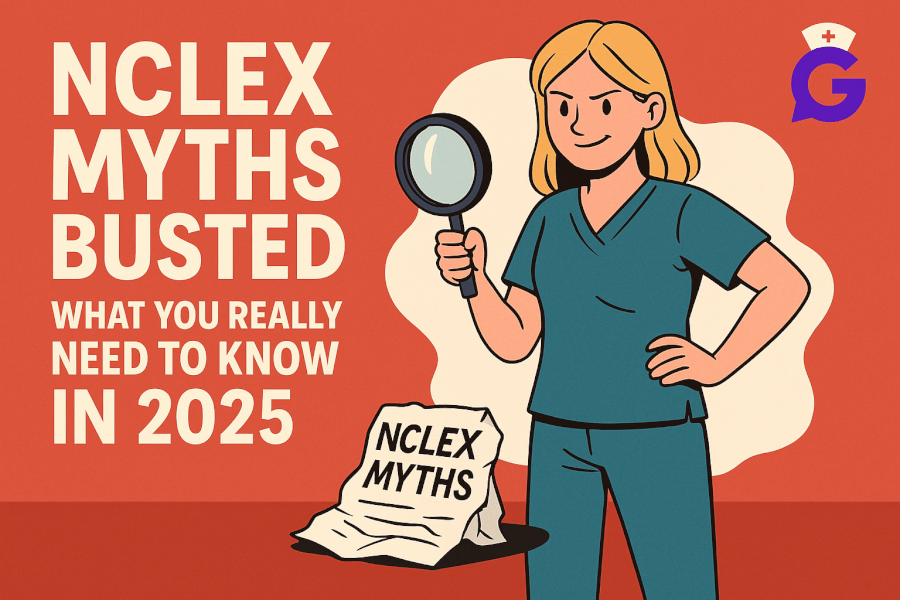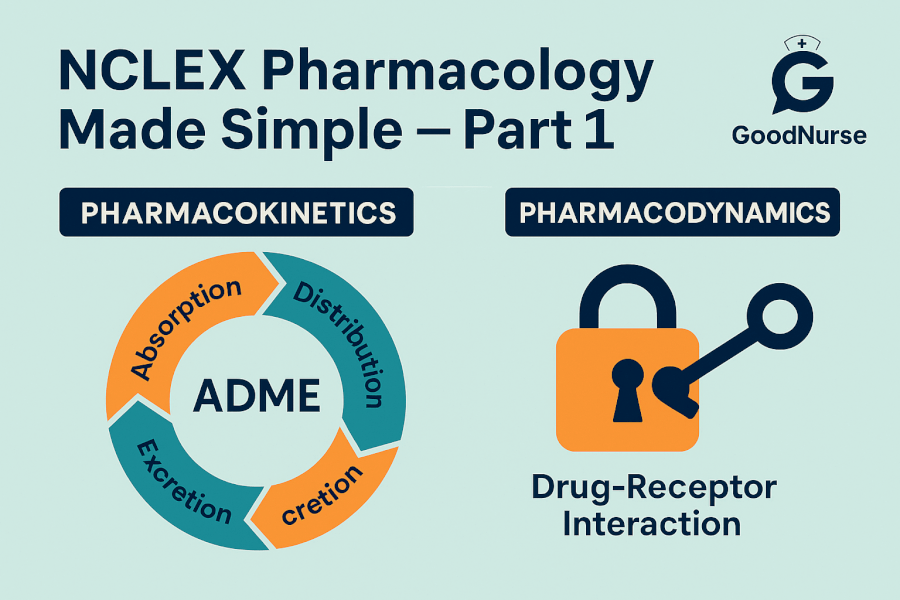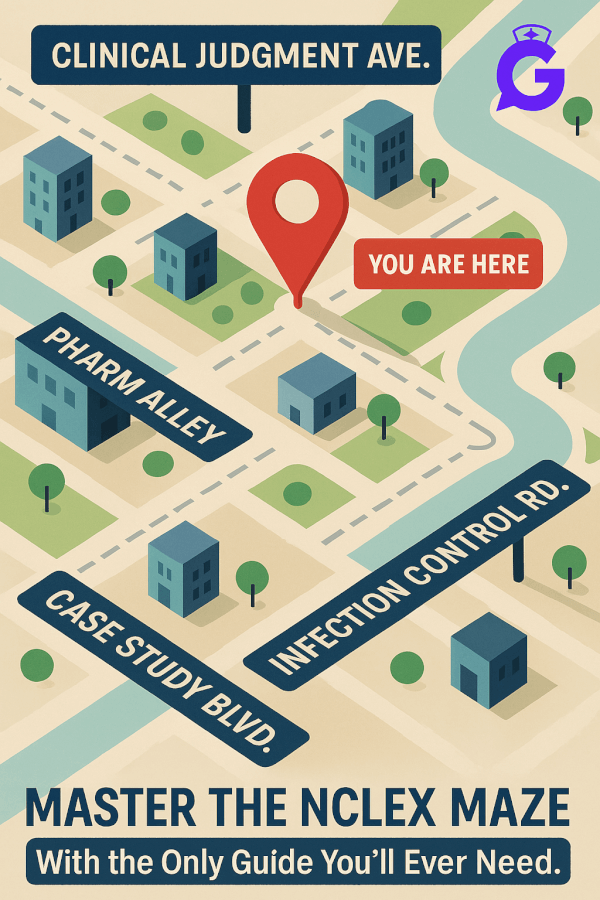The NCLEX looms large for nursing students in 2025, but it’s often shrouded in myths that fuel anxiety and derail prep. From outdated advice to online rumors, these misconceptions can lead you astray, wasting time and confidence. With the Next Gen NCLEX (NGN) emphasizing clinical judgment and real-world scenarios, knowing the truth is more critical than ever. In this NCLEX myths 2025 guide, we debunk the top myths, share Next Gen NCLEX facts, and provide practical tips to help you study smarter—whether it’s your first attempt or a retake. Let’s clear the fog and set you on the path to passing with confidence.
Myth #1: You Need to Answer All 150 Questions to Pass
Fact: The NCLEX is a computer adaptive test (CAT), meaning it tailors question difficulty to your performance in real time. The exam can stop anywhere from 85 to 150 questions once it’s 95% confident you’ve passed or failed, based on the NCSBN’s passing standard. In 2024, about 60% of NCLEX-RN candidates passed before reaching 150 questions, per NCSBN data.
🎯 What to do instead: Practice with adaptive tools like GoodNurse to build confidence in answering varied difficulty levels. Aim to master clinical judgment rather than obsessing over question numbers.
Myth #2: Everyone Gets the Same Questions
Fact: No two NCLEX exams are identical. The CAT system selects questions from a vast bank based on your previous answers, ensuring a personalized test. This is why comparing your exam to a friend’s is pointless—what you get depends on your performance and the algorithm’s assessment of your competency across the NCLEX Test Plan.
🧠 What to do instead: Use GoodNurse NCLEX prep to access thousands of unique questions, including NGN case studies, to prepare for the exam’s unpredictability.
🚀 Master NCLEX Vocabulary Fast
Want to crush your exams with confidence? Check out our Ultimate Nursing Vocabulary and Key Concepts Guide (2025) — packed with must-know terms, clear definitions, and memory tricks to help you ace the NCLEX.
📘 Read the Full GuideMyth #3: SATA Questions Mean You’re Doing Well
Fact: Select All That Apply (SATA) questions aren’t inherently harder or a sign of success. They’re one of many formats—alongside matrix, drag-and-drop, and case studies—used to assess clinical reasoning. The NCLEX algorithm picks question types based on content needs, not your score.
✅ What to do instead: Practice all question types, especially SATA, to build familiarity. GoodNurse offers targeted SATA drills with rationales to sharpen your skills.
➡️ 50 NCLEX Questions with Answers
Myth #4: The NCLEX Is Just Memorization
Fact: Gone are the days when cramming facts was enough. The Next Gen NCLEX, launched in 2023, prioritizes clinical judgment—the ability to analyze patient data, prioritize interventions, and evaluate outcomes.
💡 What to do instead: Focus on case-based practice to hone decision-making. GoodNurse’s NGN simulations help you navigate complex scenarios step-by-step.
➡️ How the NGN Changed Everything
Myth #5: AI Tools Aren’t Reliable for Studying
Fact: Not all AI is equal. Generic platforms like ChatGPT can misfire on nursing topics. However, GoodNurse is designed specifically for nursing students and NCLEX prep.
GoodNurse provides:
- NCLEX-style questions with detailed rationales
- Image and care plan uploads for instant feedback
- Adaptive quizzes targeting weak areas
- 24/7 personalized support
💬 “GoodNurse doesn’t just give you answers—it explains them like an instructor would.” — Stephanie D., ADN student
➡️ Use AI to Study for the NCLEX Without Getting Overwhelmed
➡️ The Pros and Cons of Using AI in Nursing School
Myth #6: You Have to Study 6–8 Hours a Day
Fact: Quality trumps quantity. Research shows that 2–4 hours of deliberate practice daily, with breaks, boosts retention more than marathon sessions.
🔄 What to do instead: Study in 30–60-minute blocks. Use GoodNurse to prioritize and review rationales for deeper learning.
Myth #7: You Should Study Every Topic Equally
Fact: The NCLEX Test Plan weights topics differently. High-yield areas like Pharmacological Therapies and Management of Care dominate the exam.
📊 What to do instead: Allocate 60% of your study time to top-weighted categories. Use GoodNurse’s analytics to focus on gaps like infection control or med math.
➡️ Infection Control Essentials
➡️ Understanding Respiratory Disorders
Myth #8: Failing Means You’re Not Meant to Be a Nurse
Fact: Failing the NCLEX doesn’t define your potential. Many pass on their second or third try with refined strategies.
💪 What to do instead: Analyze your CPR and use GoodNurse to target weak spots with tailored quizzes and rationales. Persistence pays off.
➡️ Real Stories from Nursing Students Who Passed After Struggling
Final Thoughts: Know the Truth, Pass with Confidence
In 2025, NCLEX myths can distract you from what really matters. The Next Gen NCLEX is challenging but fair. By debunking myths and using tools like GoodNurse, you can approach test day with clarity, not fear.
Heard other NCLEX rumors? Drop them in the comments—we’ll keep busting myths to keep you on track for success!
Try GoodNurse for Free — trusted by thousands for GoodNurse NCLEX prep that’s accurate, adaptive, and nursing-focused.







